In this post, we’re going to give you a guide to visiting the Chicago History Museum. The museum is one of our favorite attractions in the city, and we give you directions from how to get there to what route to take through the museum to what to do nearby. Read on to learn all about the Chicago History Museum!
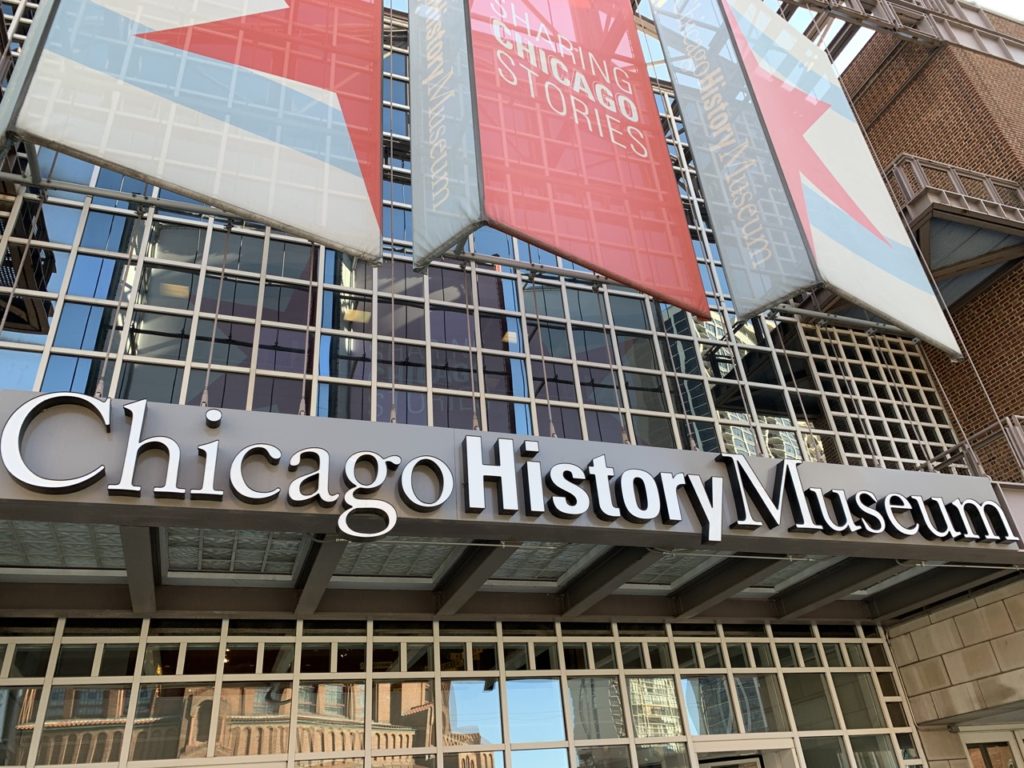
Location, Hours, and Pricing
The Chicago History Museum is located at 1601 N Clark Street, at the corner of North Avenue and Clark Street. It occupies the southwest corner of the main section of Lincoln Park (the park technically continues a mile south along the lake).
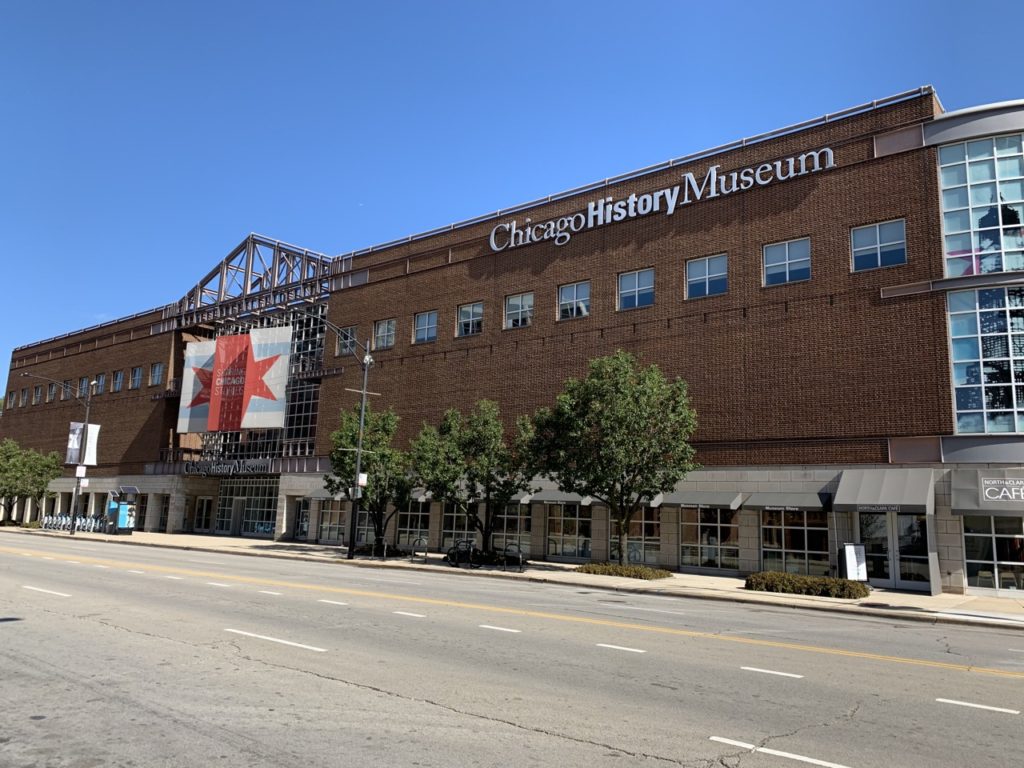
Above is what the entrance looks like. If you’re coming from the park side, you’ll first encounter the back side of the building (below), which looks like a traditional museum entrance but actually is not the entrance.
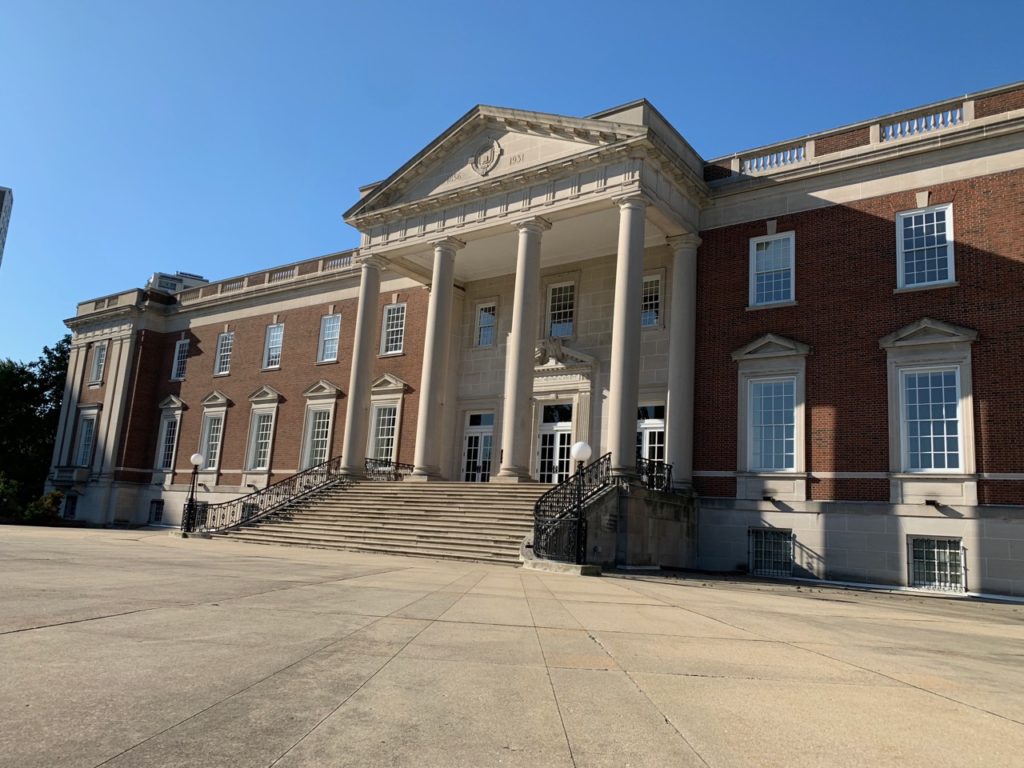
Always confirm hours, pricing, and other important details on the official website.
The museum hours are:
- Monday 9:30am to 4:30pm
- Tuesday 9:30am to 9:00pm
- Wednesday 9:30am to 4:30pm
- Thursday 9:30am to 4:30pm
- Friday 9:30am to 4:30pm
- Saturday 9:30am to 4:30pm
- Sunday 12:00pm to 5:00pm
Admission is $19 for adults (13+), $17 for seniors (65+), and $17 for students aged 19 to 22, with a $2 discount for City of Chicago residents. All children 12 and under are free. Illinois resident children 18 and under are also free.
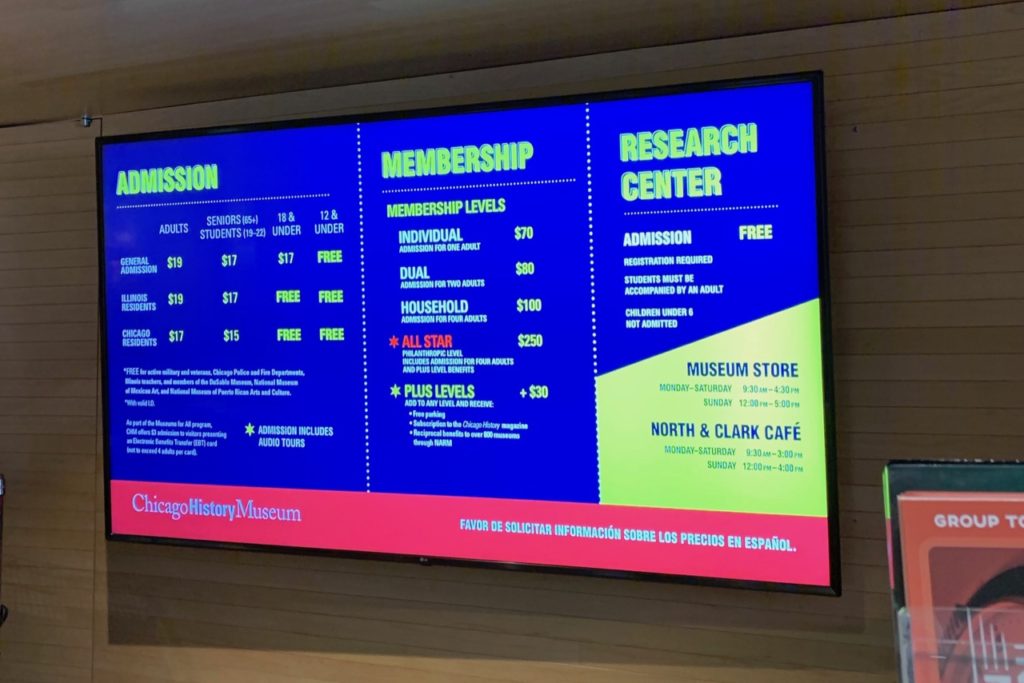
If you’re a local considering multiple visits in a year, you’ll want to consider membership. A dual membership for two adults costs $80, which is only $12 more than two Chicago adults would pay for two visits.
You can purchase tickets online or at the ticket desk when you arrive.
Getting To the Chicago History Museum
Located in Chicago’s Lincoln Park, the Chicago History Museum is incredibly accessible, though it isn’t located at the heart of downtown with many of Chicago’s other attractions. This is good–you should definitely get out of downtown to see more of the city.
Walking
We wanted to mention walking because even though you might have long walks from some areas, some are quite pleasant.
In particular, if you’re coming from farther downtown, the walk can take you through the older, ritzy Gold Coast neighborhood of Chicago or along the Lakefront.
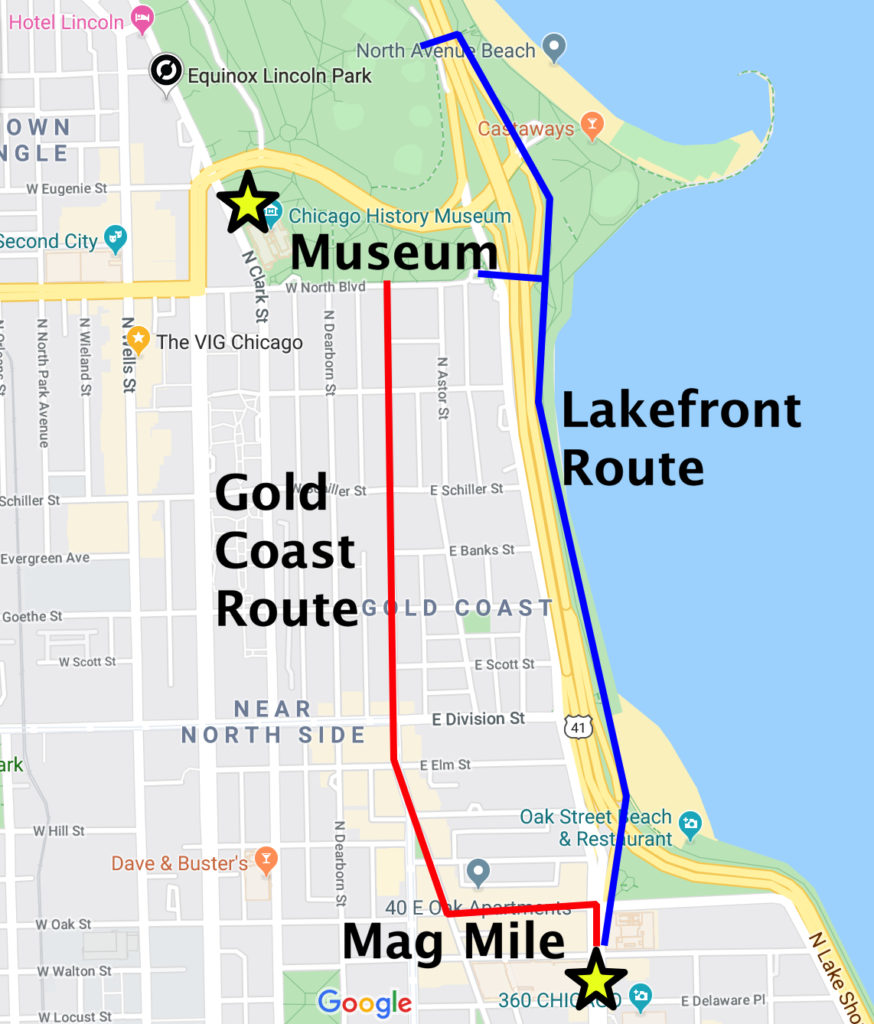
The 1.3 mile walk from the north end of the Magnificent Mile (Chicago and Michigan) isn’t short, but on a Saturday morning the Lakefront Trail comes alive with runners and cyclists (this is a fun energy, just be sure to be aware of where you’re walking).
Walk up to North Avenue Beach, and cross the bridge over Lake Shore Drive into Lincoln Park.
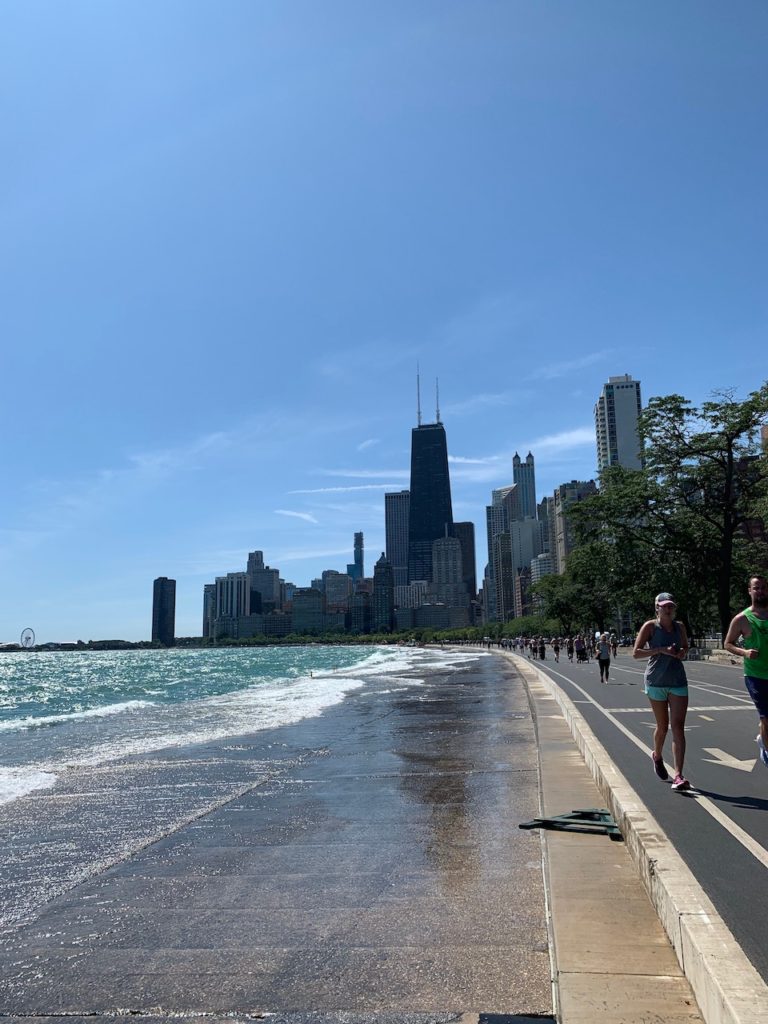
Staying off the Lakefront, both Dearborn and State have a variety of older, luxury townhomes. The neighborhood is one of the wealthiest in the country. Walking north you’ll hit North Avenue (the southern end of the park), and turn left to get to the museum.
By Public Transportation (L or CTA Bus)
There are a ton of CTA Buses that pass through this area, so that’s the easiest option if you’re coming from some distance. Use Google Maps to determine the best route. We have a guide to taking the CTA bus in Chicago.
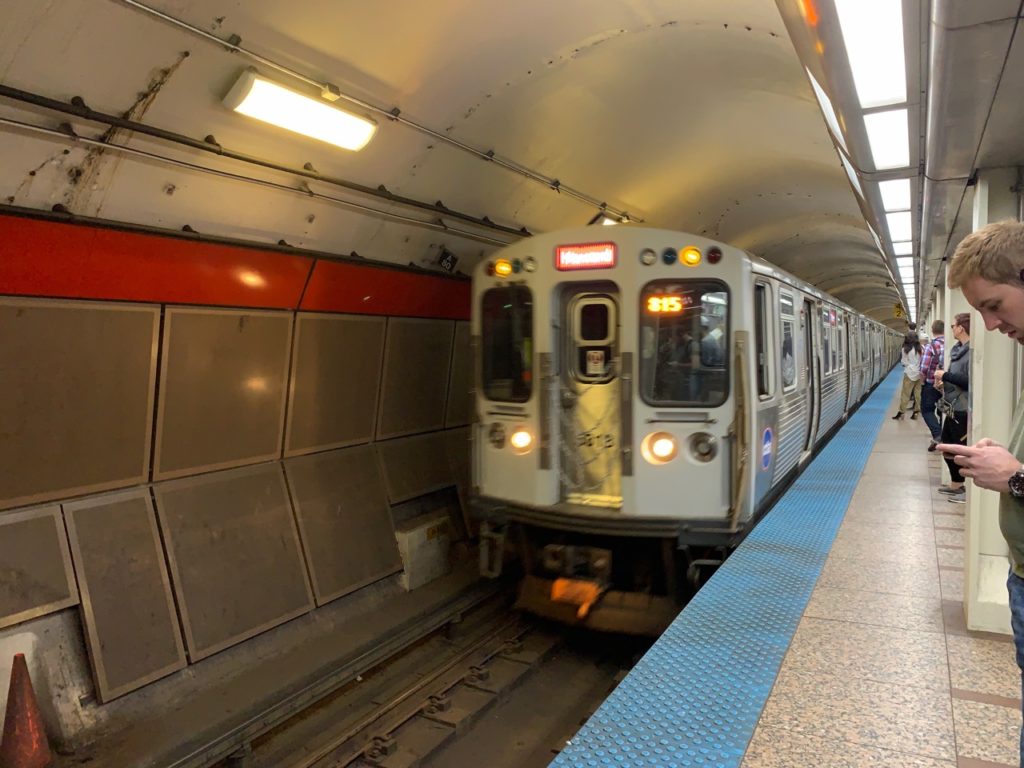
The Sedgwick stop on the L’s Brown Line is also only a 10 minute (0.5 mile) walk away.
Taking the Red Line, Clark and Division is 0.5 miles away. The North Avenue stop is 1 mile away. Both are uninteresting walks. We also have a guide to riding Chicago’s “L” train system.
By Car
The parking lot for the museum is a short walk north (the parking lot address is 1730 N Stockton Dr, Chicago, IL 60614). Use Google Maps for directions from your location to the parking lot. Parking is $10 with validation at the museum.
Street parking is available in the area. You’ll want to stay north of North Avenue for the $2 per hour rate (south of North will bring you to $4 per hour). The most convenient option is to use the Park Chicago app to pay for parking, just note your meter number.
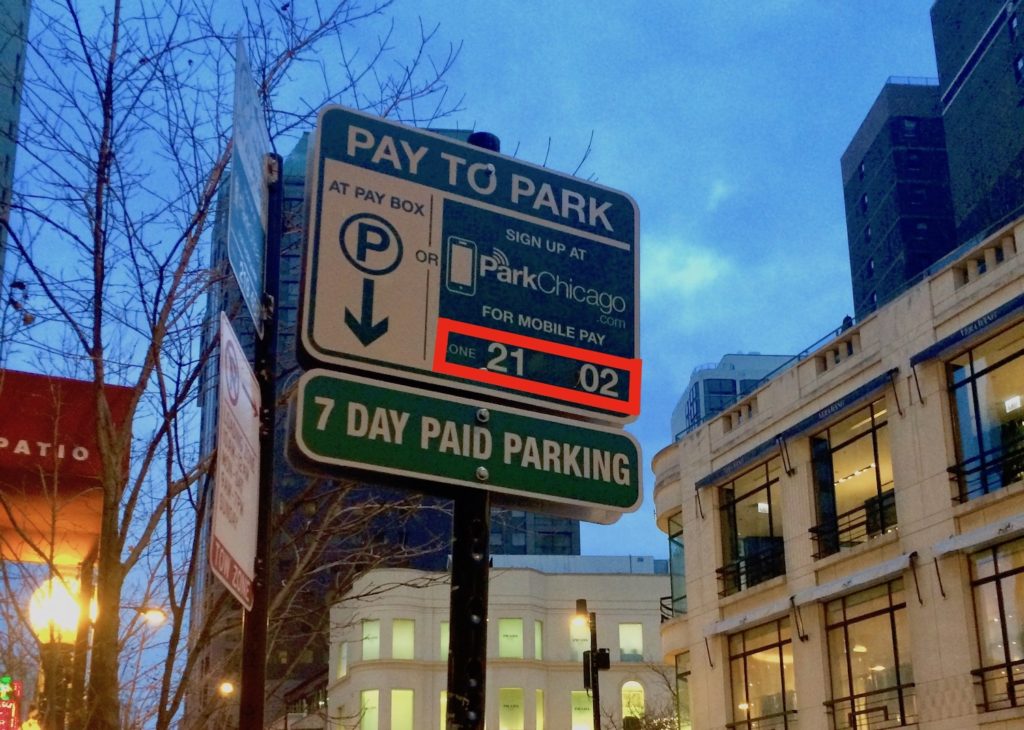
Is The Chicago History Museum Worth It?
Yes. For starters, it’s an excellent museum, Chicago has a great history, and the museum charges a reasonable price.
Because of its location near to a variety of other activities, the Chicago History Museum doesn’t have to occupy your entire day. It’s a perfect component of a day in the Lincoln Park / Old Town area. You’re definitely not “wasting” a few hours or the cost of admission.
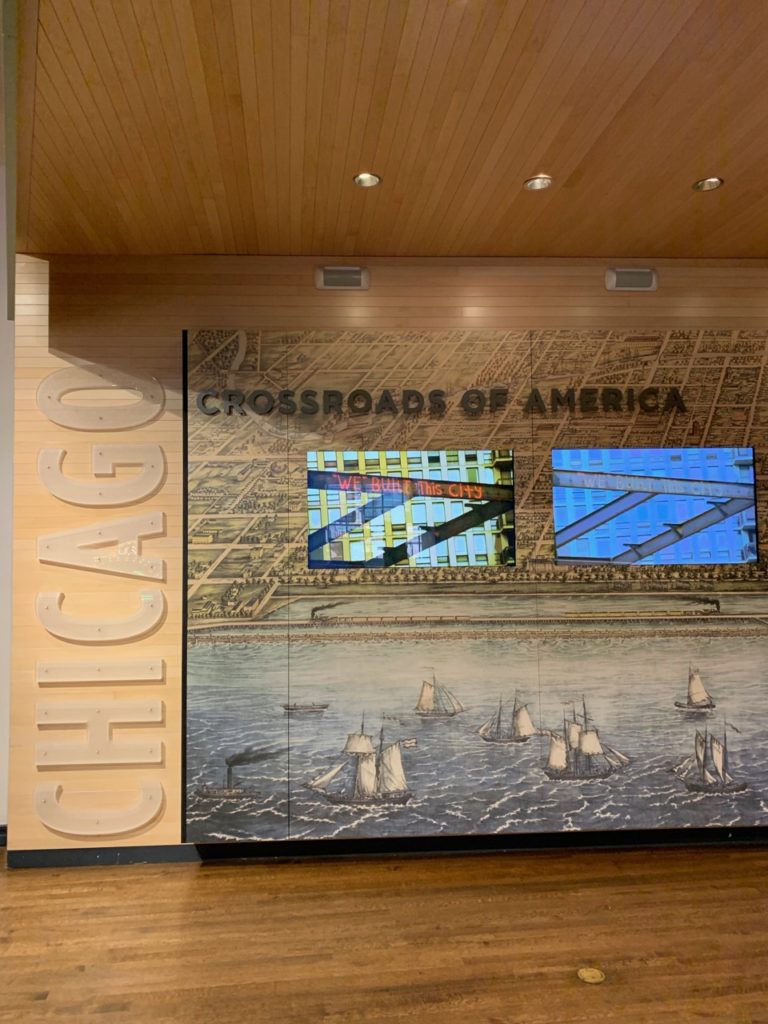
How Long to Spend
Most days, the museum is open seven hours, and we think a good visit will take about three to four hours.
You definitely could spend the full seven hours there, and none of it would be wasted. You’d probably read just about every placard and historical tidbit over the full seven hours.
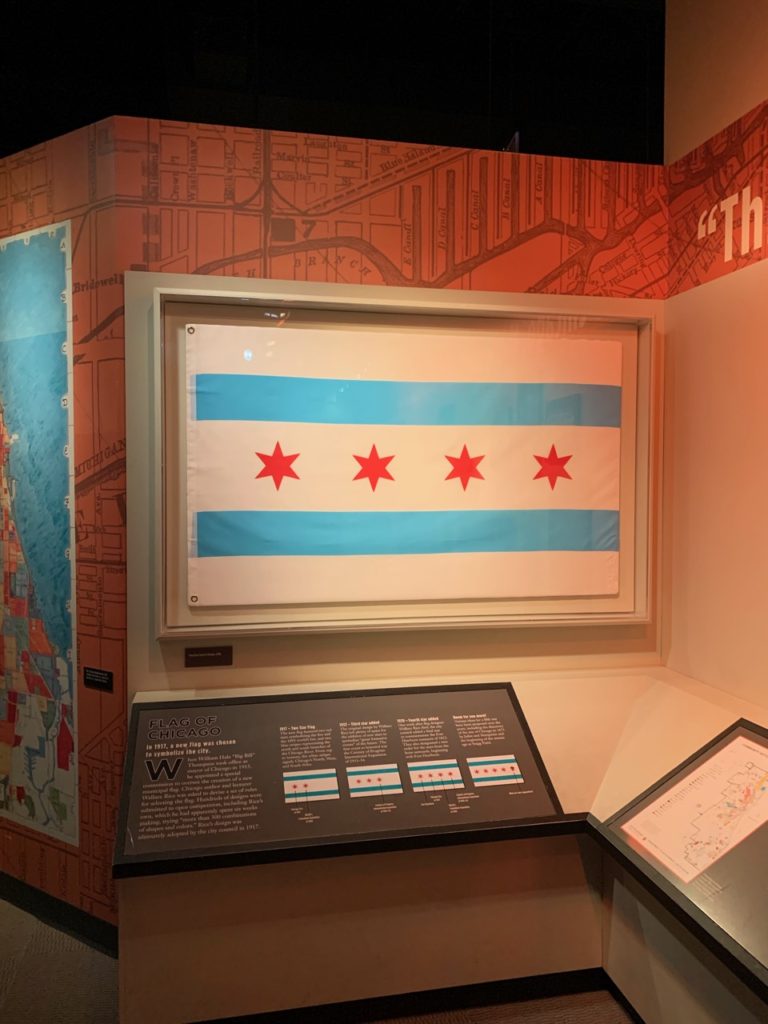
But just to soak in the main historical exhibits and browse the temporary exhibits, four hours is probably enough.
If you’re visiting from out of town, a four hour visit is a great way to learn some Chicago history and still have enough day left to take in a few of the many activities nearby.
What To See (Suggested Itinerary)
The Chicago History Museum doesn’t require too much preplanning. It’s a relatively small building, and the museum itself is spread over two floors with one half of one floor containing the bulk of the permanent exhibition.
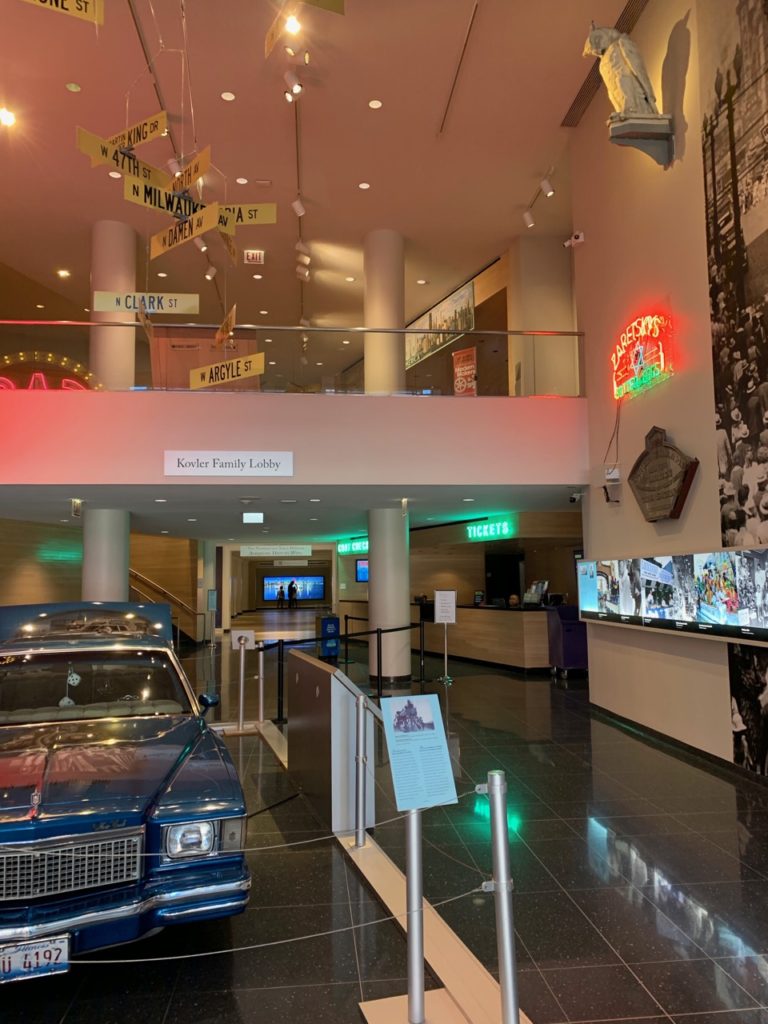
When you arrive, you’ll enter via the doors on Clark Street, about half a block north of North Avenue. The cafe on the south side of the building opens at the same time as the museum and sells soup, sandwiches, and coffee–but you won’t be able to bring food or beverages into the museum.
You can buy tickets at the ticket desk if you haven’t purchased them online. Make sure to grab a map from the front desk. If you have any bags, food, or beverage you’ll need to use the complimentary coat check.
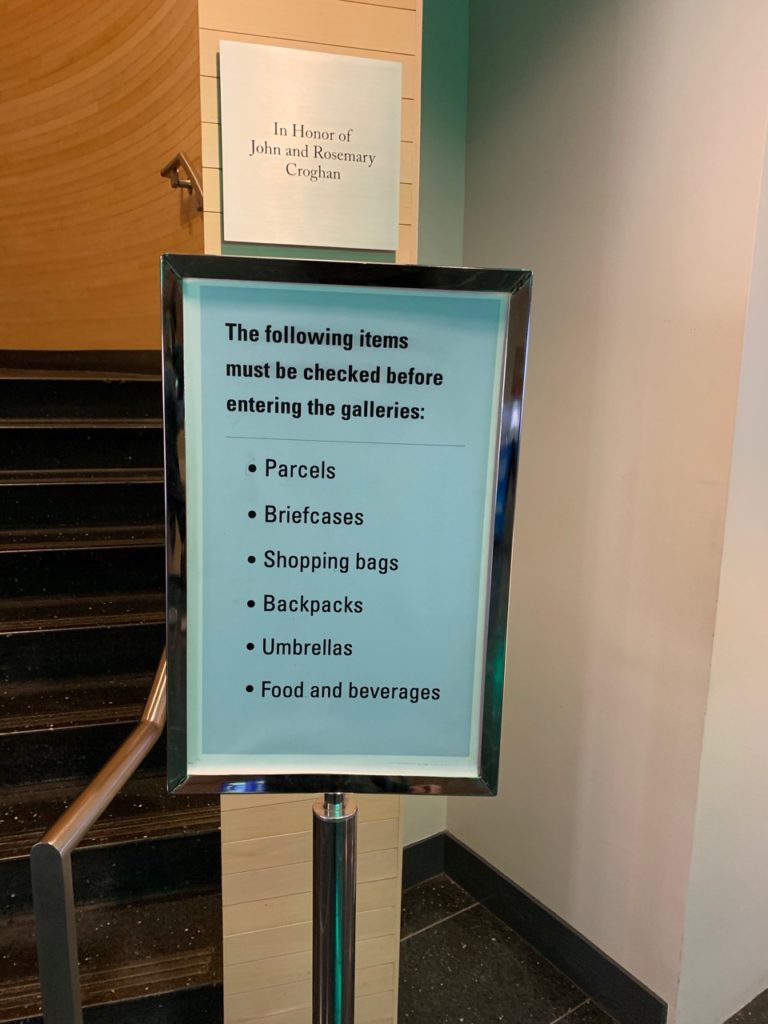
A few steps after entering, on the right, is the theater that shows “The Great Chicago Adventure.” I’ll wrap up this section explaining why I don’t think you need to watch this film, but when you arrive it’s worth noting the scheduled showtimes for the day (the film is about 20 minutes long).
Main Exhibition – Crossroads of America
You actually want to start your visit upstairs, so take the spiral staircase up (elevators are also available). The main permanent exhibition is “Crossroads of America” in The Exelon Wing.
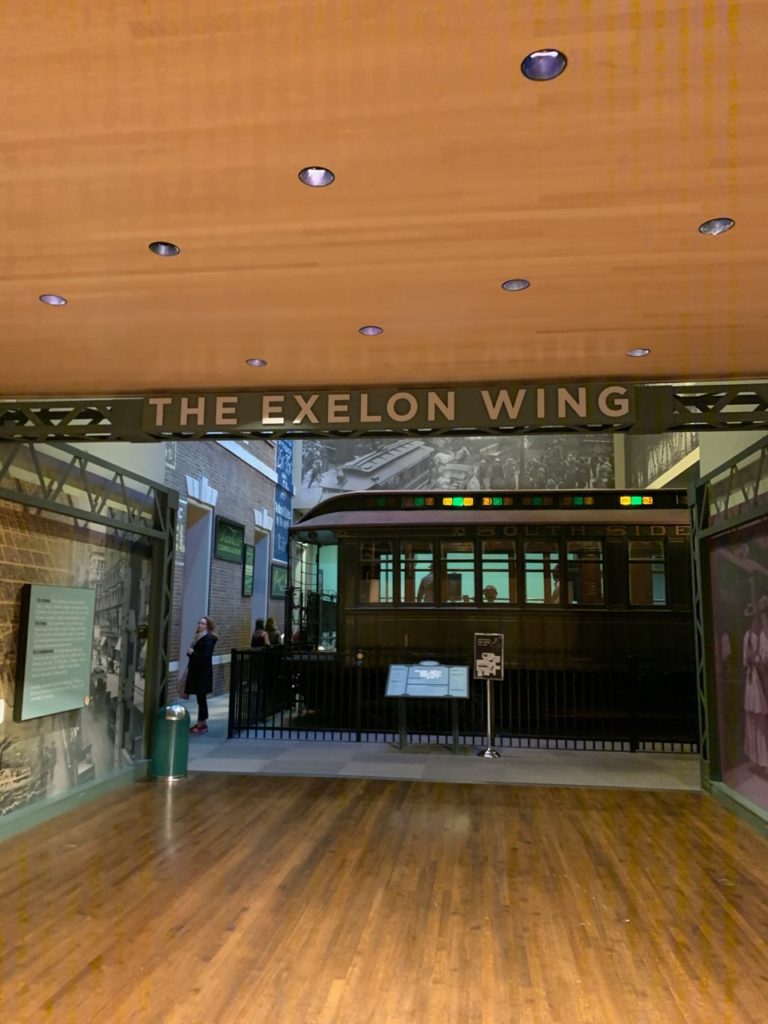
The map from the front desk is somewhat helpful, but the map right at the front of the exhibition (pictured below) is better.
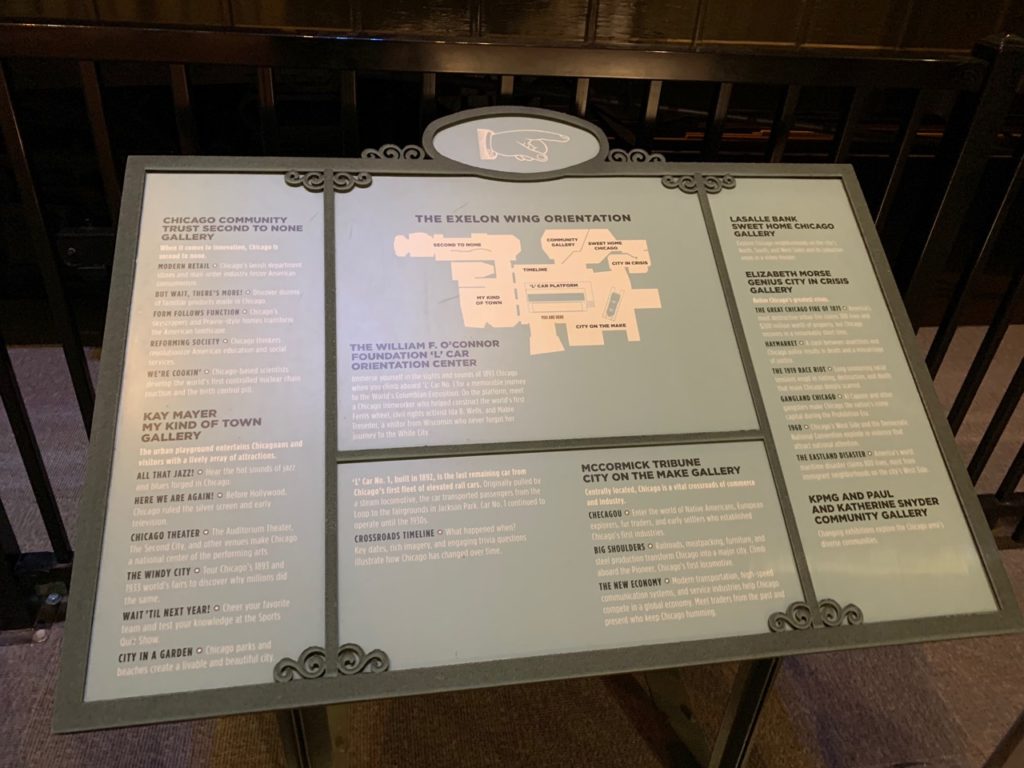
This exhibition is a semi-chronological walk through the history and culture of Chicago. You can start with the “L” train car in the middle, but our walkthrough finishes with it.
You’re going to want to walk counter-clockwise around this half of the building, visiting the following exhibits along the way…
City on the Make. You start to your right with the earliest inhabitants of the region and the founding of the city as a fur trading post. This section focuses on the significance of Chicago’s location–along Lake Michigan, in the middle of the U.S., and near the Mississippi River.
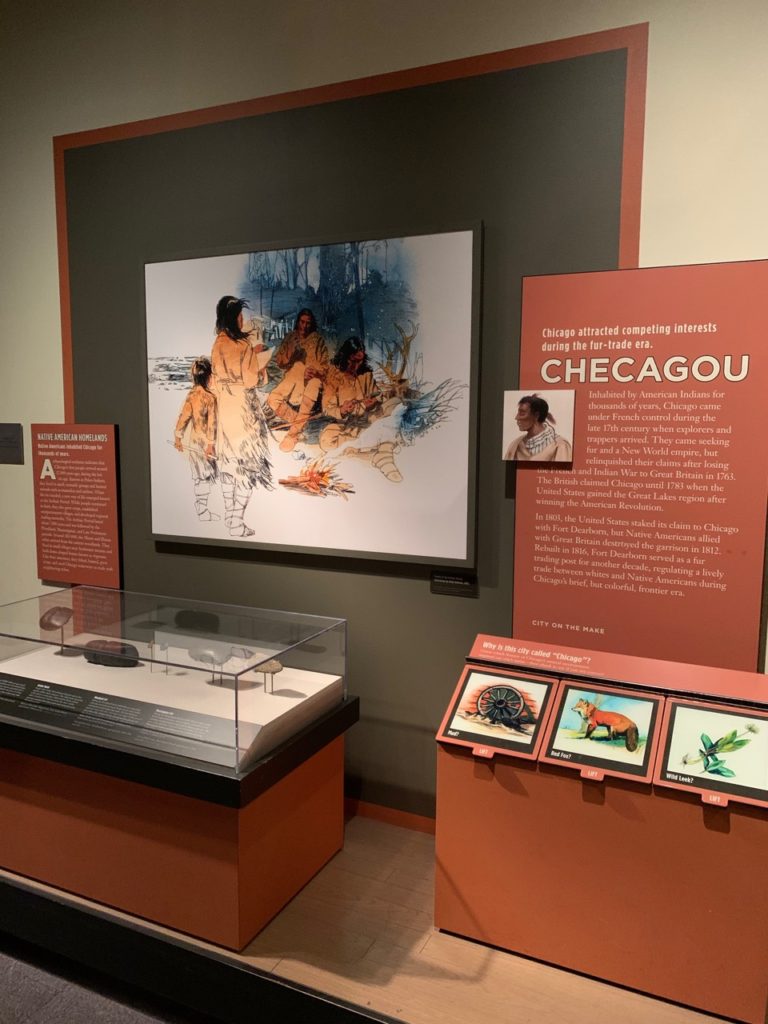
City in Crisis. This exhibit focuses on some of the crises that have shaped Chicago, from the Great Chicago Fire to the Eastland Disaster.
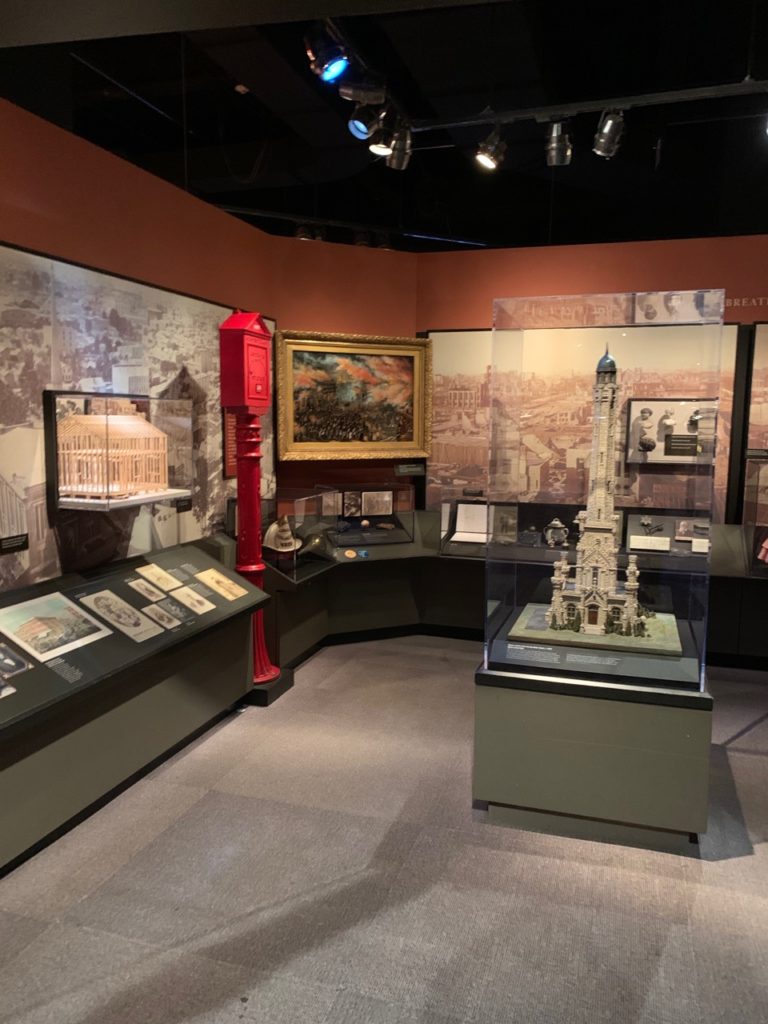
Sweet Home Chicago. This exhibit focuses on the “City of Neighborhoods” element of Chicago. We’ve discussed Chicago neighborhoods in detail here, and this exhibit is a quick look into the diversity of our neighborhoods.
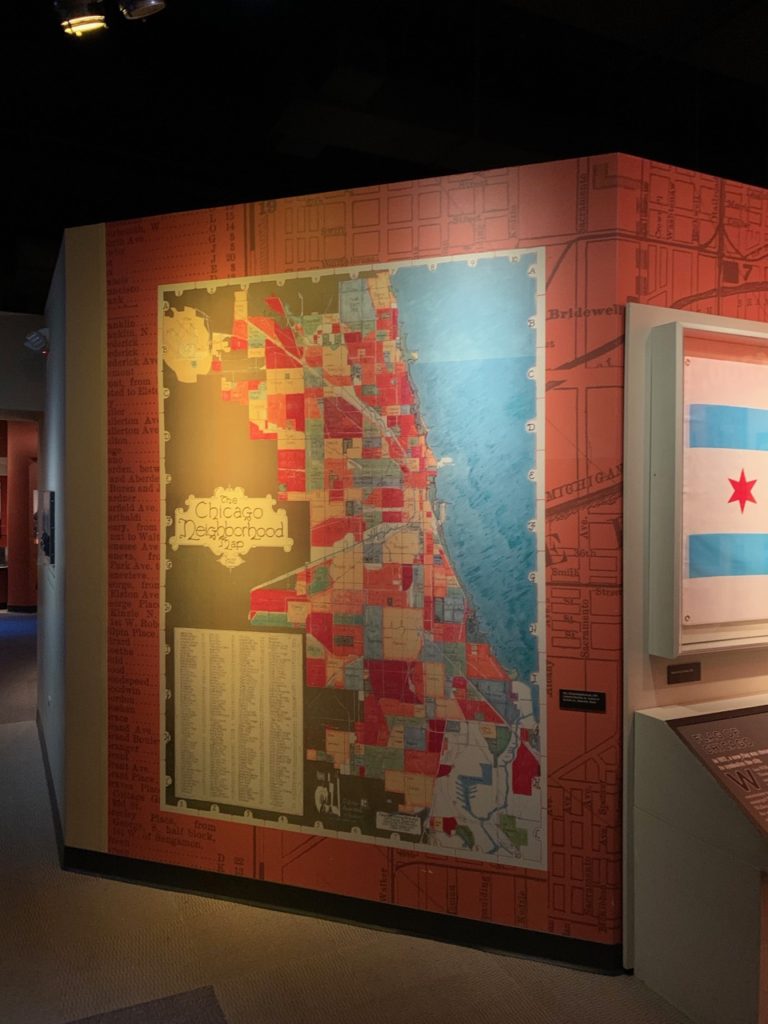
Community Gallery. The community gallery hosts temporary exhibits. Typically we’ll pass it in a first lap around the museum just to keep the “flow” going, but the exhibits are typically worth visiting once you finish the permanent exhibit.
Second to None. “Second to None” is a play on Chicago’s “Second City” nickname. In this exhibit, we brag about some of our contributions to American culture and history.
My Kind of Town. This exhibit focuses on Chicago’s arts, entertainment, and attractions culture. It includes a small section on the 1893 World’s Columbian Exposition, one of our personal favorite moments of Chicago history. It also has some cool sports memorabilia.
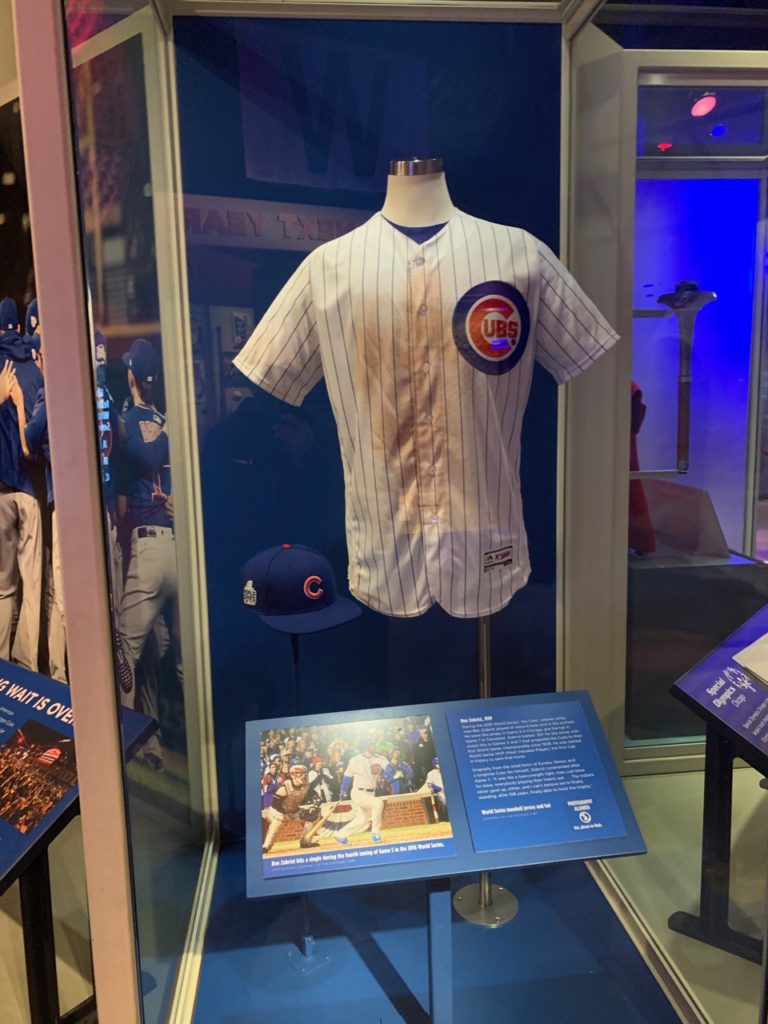
‘L’ Car Platform. One of Chicago’s first L cars occupies the center of the permanent exhibit. We save it for last so that you’ve read about Chicago history before stepping into it, and also because now is a good time to sit and rest your feet before moving onto the rest of the museum.
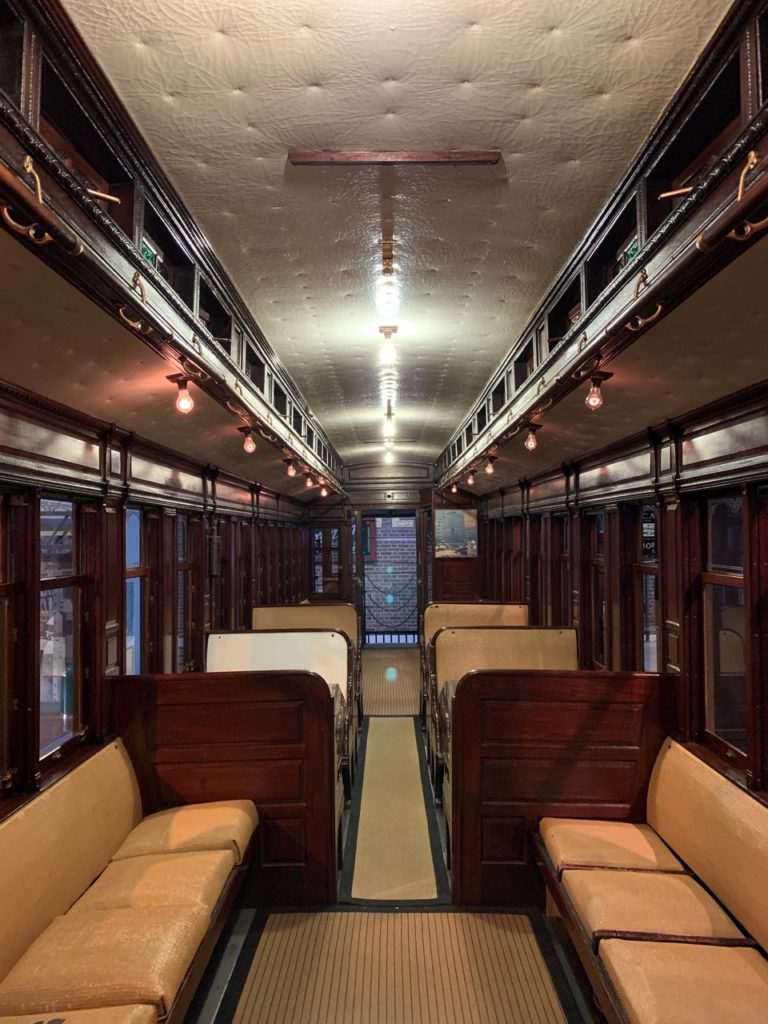
Abraham Lincoln
The other significant permanent exhibit on the second floor is an exhibit focusing on Abraham Lincoln. Exiting the Exelon Wing and turning right, the exhibit is unmissable.
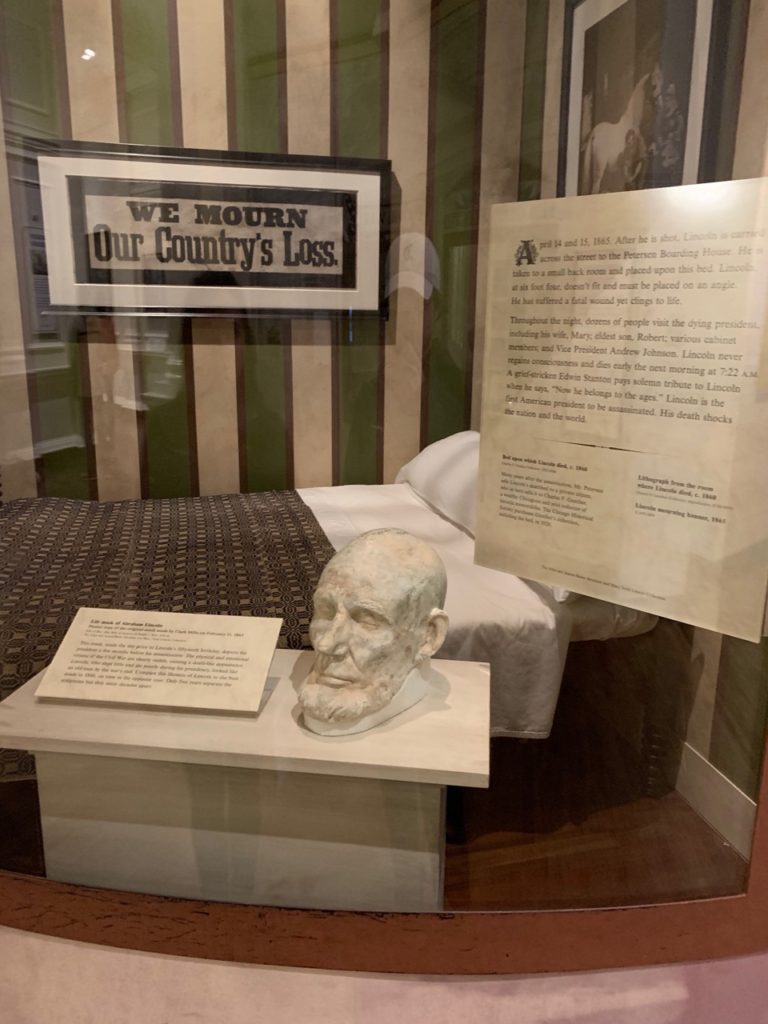
Other Second Floor Exhibits
Most of the rest of the second floor is used for temporary exhibits. Check the map you got at the front desk for information on what’s currently on display.
If it’s open, you can also visit the Morse Genius Chicago Room behind the Lincoln exhibit. It’s an event space with some beautiful stained glass pieces along the walls.
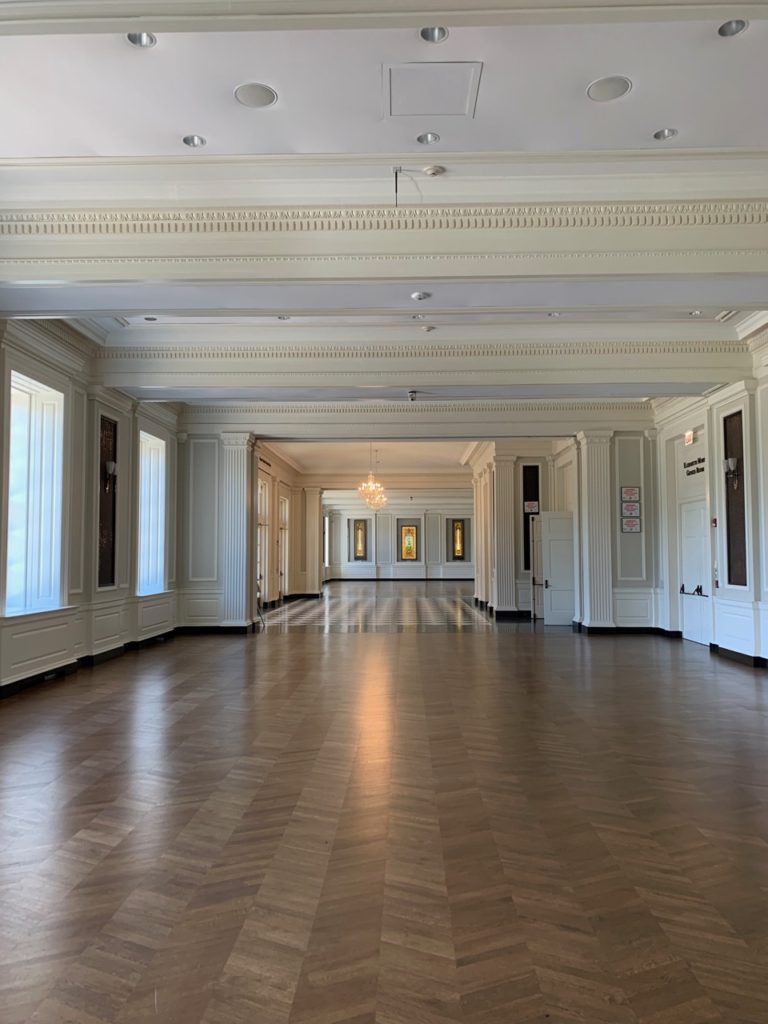
First Floor Exhibits
Coming back down the stairs, you can turn left into the American History Wing. The main room here has a large map of Chicago on the floor, which a few notable landmarks indicated.
On the left are two exhibitions. The Diorama Hall contains eight dioramas of historical moments. And the Facing Freedom in Chicago is a very interesting exhibit about the history of and fight from freedom in the city.
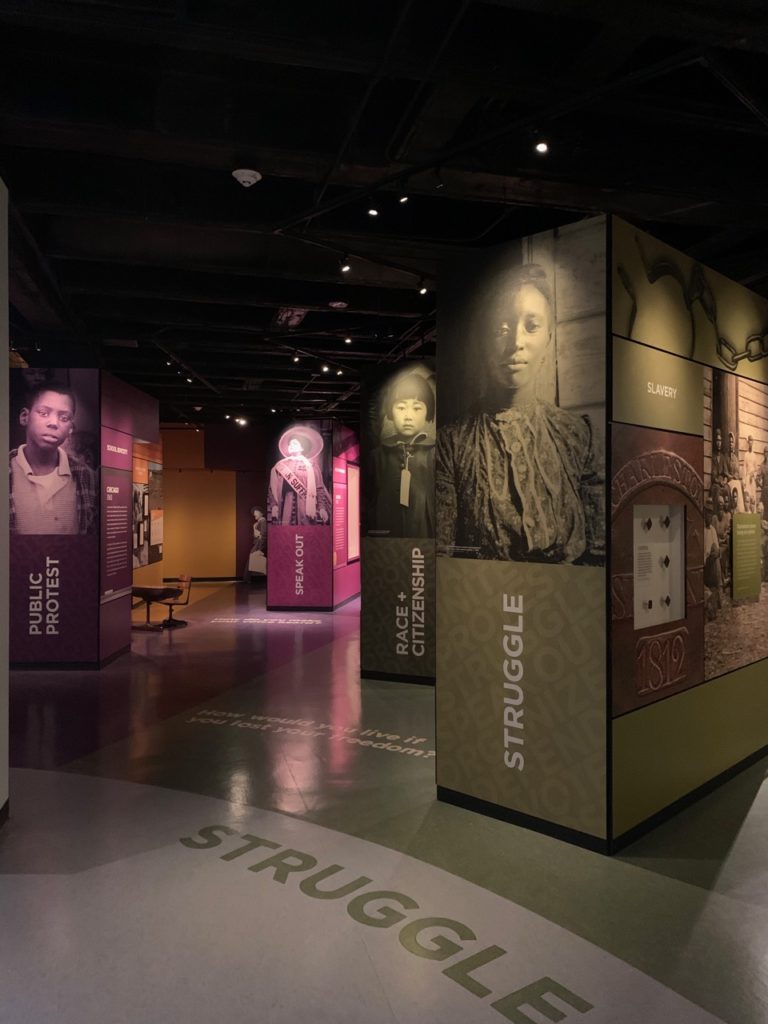
Across from these two exhibits is the theater, showing The Great Chicago Adventure. This 20-ish minute film…take you on a trip through Chicago history…sort of…
I really don’t like “The Great Chicago Adventure.” I’m glad I watched it just so I can tell people not to plan excessively around it. If it fits into your day, fine, but you are missing almost nothing if you skip it.
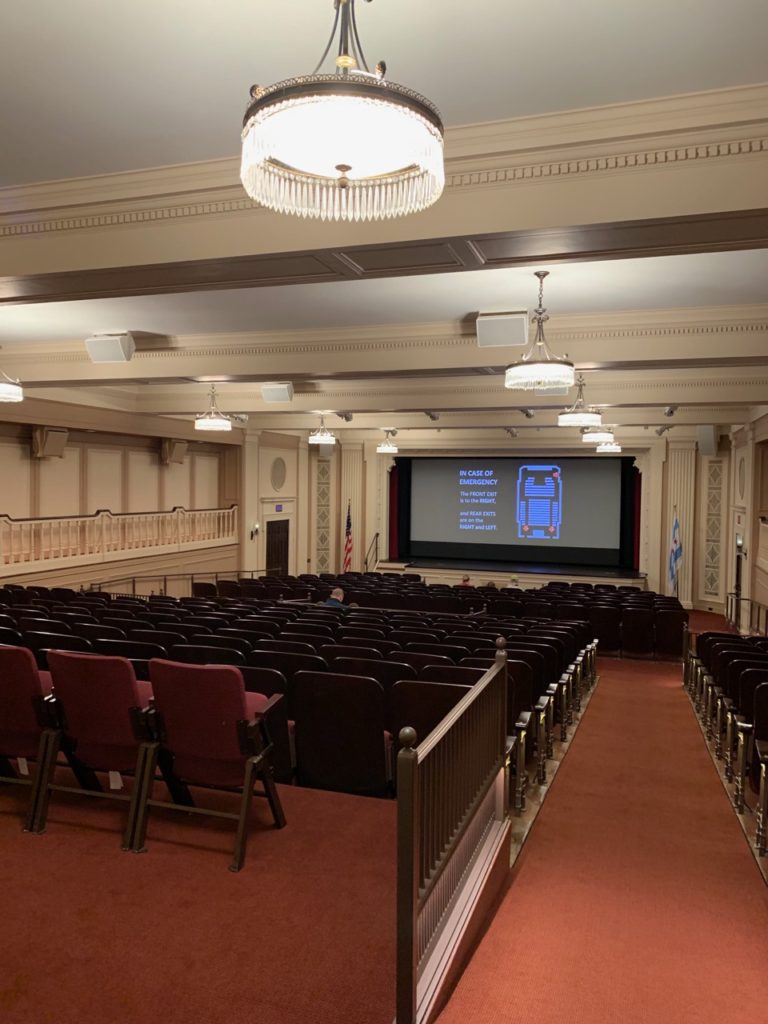
The only thing I find even remotely redeeming about the film is a scene depicting the “White City” of the 1893 World’s Columbia Exposition–and that’s probably only because that is my personal “if I could travel back in time…” moment.
Otherwise, the film offers nothing substantive about history. There’s something of a storyline involving the main characters, but that too goes underdeveloped.
Also on the first floor you’ll find the cafe, gift shop, and a few other small exhibits.
What’s Nearby
Ideally, you plan to visit the Chicago History Museum as part of a Lincoln Park / Old Town day. There are definitely enough activities around here to fill a day.
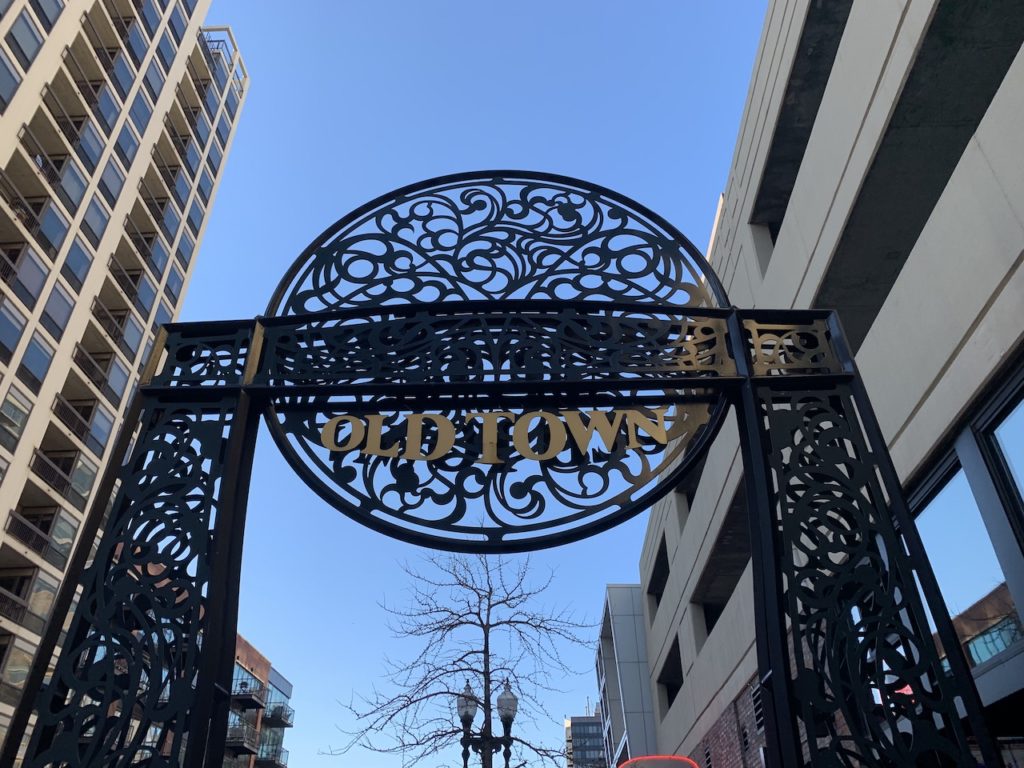
In any season, you’ve got the bars and restaurants of Wells Street, the heart of Old Town. Old Town Ale House, on North Avenue west of Wells is a neighborhood staple. You could start the day with brunch at Nookies, Kanela Breakfast Club, or The VIG.
At the intersection of Wells and North is The Second City, Chicago’s most famous comedy club and the perfect way to spend an evening in the area. We’ve previously reviewed UP Comedy Club (a Second City Theater).
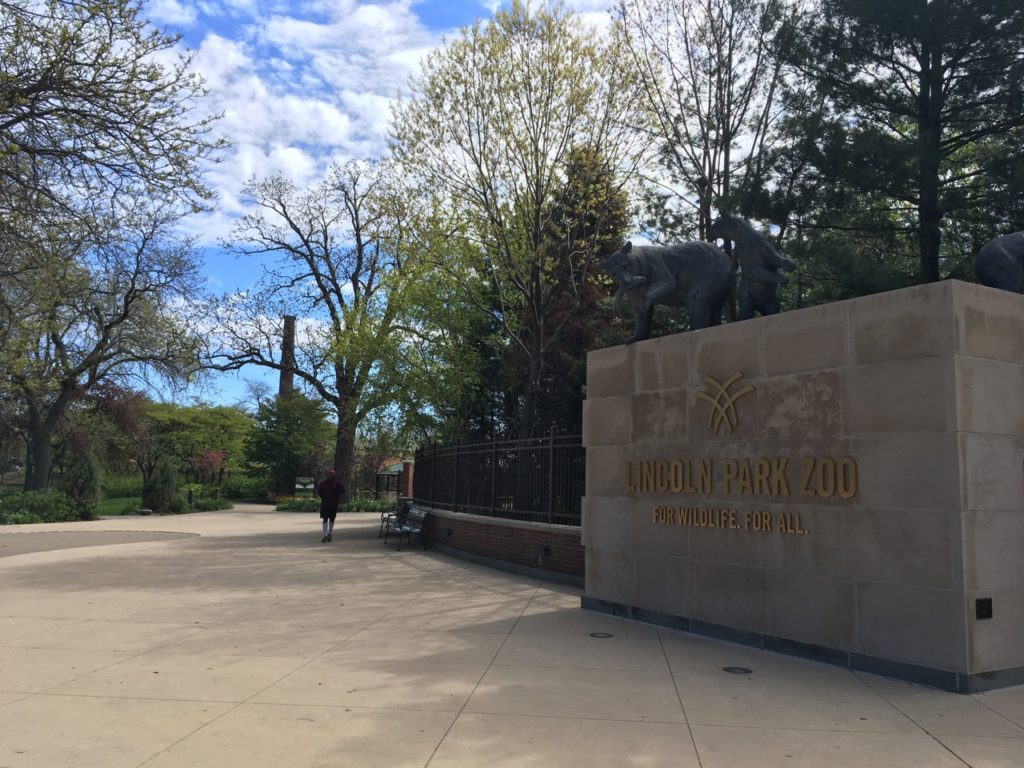
In the summer, both the zoo and the nearby North Avenue Beach are good options. Really the entire Lincoln Park and the lakefront are worth exploring. The Green City Market takes place Wednesday and Saturday mornings in the summer.
The Alfred Caldwell Lily Pool is a must-visit when it’s in season (it closes mid-November through mid-April).
In the winter, you might be able to catch Lincoln Park Zoo’s ZooLights. (There’s actually a ton of great things to do in Chicago during Christmastime.) If not, the zoo itself is still open and free 365 days of the year.
Also nearby are the International Museum of Surgical Science and the Peggy Notebaert Nature Museum.
